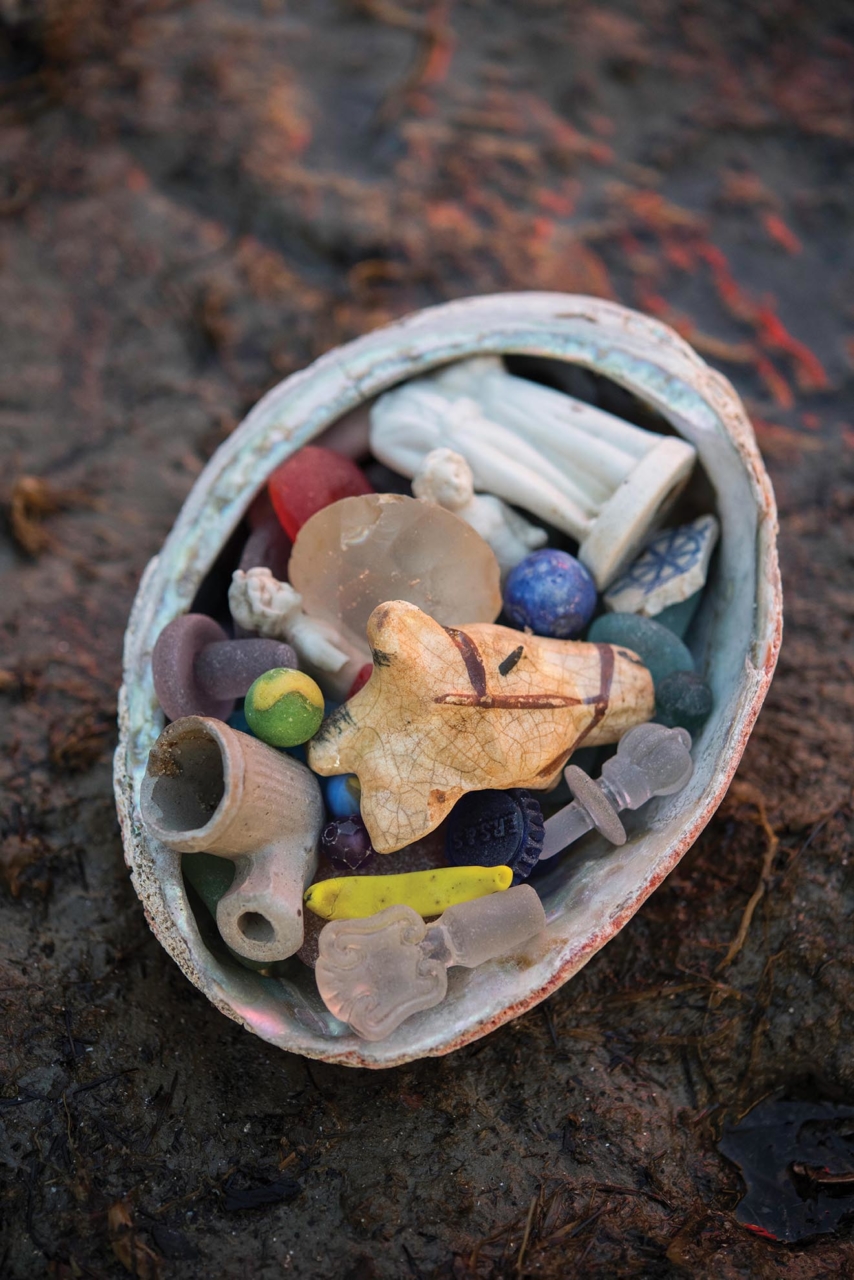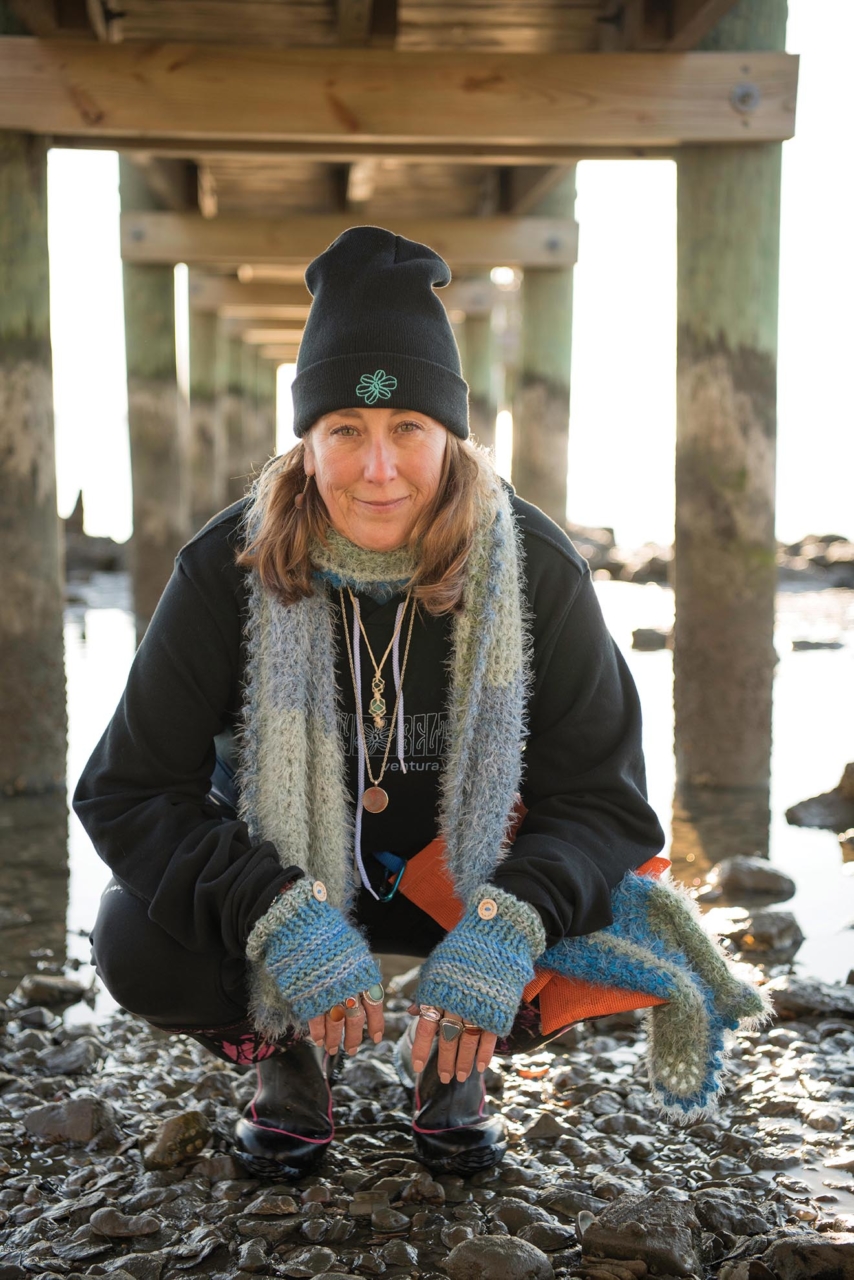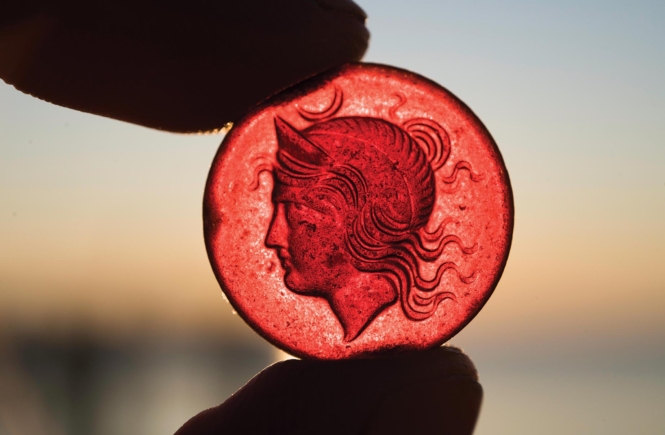Mary T. McCarthy has spent years sifting through the shoreline of Chesapeake Bay to prepare for the debut of her brand-new museum, The Beachcombing Center
Written by Katie Riley
Photography by Jay Fleming
It is still dark most mornings when Mary T. McCarthy sets out in her kayak, paddling toward a nearby beach, accessible only by boat. As the sun begins to peek over the horizon, McCarthy is knee-deep in mud on the shoreline, searching carefully for some unknown treasure.
The perfect find?
“Whatever finds me that day,” she says, matter-of-factly.
McCarthy, an educator, lecturer and bestselling author of multiple books, is also an expert beachcomber. She spends hours each week combing the shorelines of the Chesapeake Bay in search of sea glass, bottles, old pottery and marine debris. McCarthy’s interest goes beyond the thrill of the hunt; she has turned beachcombing into an art form.
For the past six years, McCarthy has advocated tirelessly for a museum for rare beach finds from around the world. Her dream will become a reality this spring, when The Beachcombing Center debuts its first exhibit on April 3 in Knapps Narrows, on Tilghman Island. The center is dedicated to educating the public on shoreline finds and to increasing awareness about eroding coastlines and marine debris.
With plans to open a more permanent location for the museum in the coming months, McCarthy is eager to share her vision with the rest of the world.
“It’s always been my hope that beachcombers from around the world would have a home for our finds so that people could visit and learn from them, collectively.”
The center will feature rare finds, like tableware, bottles and sharks’ teeth, and have interactive exhibits, such as shell sorting and shark’s-tooth identification. One exhibit will focus on the origins of finds, where a shard of beach glass might be displayed next to the original make and model of the bottle it came from.
The Beachcombing Center will also have multiple displays on sea glass, including the entire collection from The Sea Glass Center, originally founded in Maine. When McCarthy took over as executive director of The Sea Glass Center three years ago, she worked to save and catalog the sea glass so that it might become a permanent part of the future beachcombing center. Important collections, such as Barbara Bush’s personal sea-glass collection, will go on permanent display in the future space of The Beachcombing Center.
She has also received donations for the center from collectors around the world and cherishes the connections she has made through them.
“There is a special bond among beachcombers. We all go out on the shore for different reasons, and sometimes we find peace and healing, in addition to whatever we bring home that day,” McCarthy says. “Every found piece has a story, and the things we bring back are a testament to our time at the shore.”
When not planning or researching items for the center — her own workspace contains thousands of pieces of sea glass that she identifies and catalogs — McCarthy travels the country, giving lectures on coastal erosion and beachcombing. She also works at sea-glass festivals, doing sea-glass identification. As if she wasn’t busy enough, McCarthy published a children’s book, I See: A Beachcombing Treasure, in 2019 in order to educate children on beachcombing and marine debris.
It was only 20 years ago when McCarthy began her beachcombing journey, searching the beaches of the Chesapeake Bay with her own young children. On their first day of exploring, McCarthy found a rare sea-glass marble: a perfectly frosted, orange cat’s-eye marble.


“I’m always searching, and sometimes all I come back with is the gratitude of knowing that it’s been a day well spent.”
— Mary McCarthy
McCarthy wondered at the history, context and provenance of her find, and beachcombing quickly evolved from a part-time hobby into a full-time obsession.
“Finding that marble changed my life. What began as a journey has truly become my life’s work,” she says.
Every morning McCarthy begins her day by checking the tidal charts and noting low tide, the time when it is best to comb the shore. She sets off on foot or by kayak, carefully scouring beaches, immersing herself in the muck and sand as she looks for even the tiniest finds, like beads and buttons. Often, she is up to her elbows in marsh grass and dirt.
“It is not glamorous beachcombing; it’s more like mud larking… boots in the mud,” she says candidly.
She has made rare discoveries over the years, like a small mermaid statue, vintage doll pieces and a glass intaglio carved with the head of the goddess Artemis, who fittingly is the goddess of the hunt.
As her collections have grown, McCarthy has become more discriminating with her treasures. She advises beginning beachcombers to keep whatever they find initially and later cultivate a collection based on the items that they truly love.
Living her life by the tides has been good to Mary McCarthy. She has amassed an enviable collection as evidence of her years combing beaches, though she is quick to point out that its worth extends beyond its physical value. “I’m always searching, and sometimes all I come back with is the gratitude of knowing that it’s been a day well spent,” she says. “If I’m lucky enough to be on a shoreline that day, then I’m lucky enough.”

